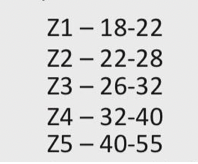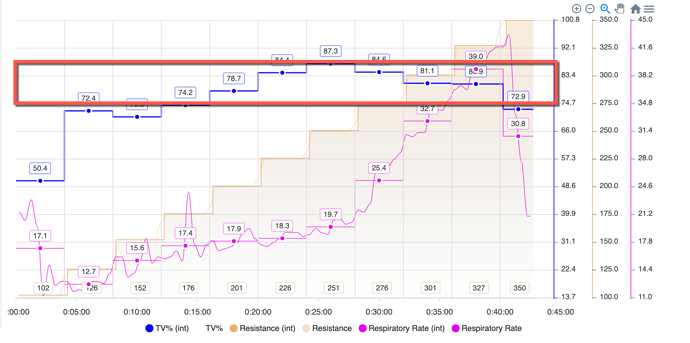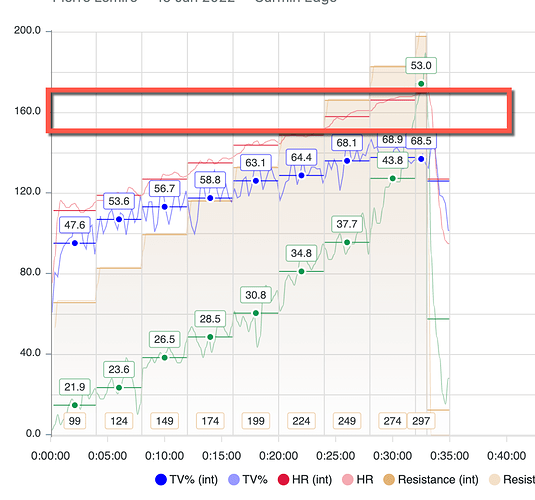I see a lot about RPEs, which include how hard one is breathing, along with power and HR to determine what efforts to apply on a ride. There is good specificity on that, but I don’t see (maybe I missed it), specifics on how to use breaths per minute on sustained power rides, or non interval rides/sessions, as a barometer with the same specificity as, say, HR. The bike computers now show that.
I was wondering if there is research that can point to breaths per minute as a way of gauging how much effort to put out in different types of rides?
It would seem that this is a dynamic of physiology that does not get much exposure a parameter while riding.
Hello @micomico
Below are the respiratory zones I recommend, working toward the bottom without stress. It is possible to get a zone below in respiration over time, meaning that you are capable of deepening the breath, even more, to be able to breathe in Z1 while everything else is in zone 2. This is eventually my goal.
Many people I test are a zone high, meaning that if they are in endurance wattage / heart rate they are in tempo respiration.
If you find you are similar, then make sure as you try and drop your respiration rate, breathe deeper, that this isn’t stressful. If it is stressful you are likely aren’t deepening the breath enough for the lower respiration rate, so your tidal volume would be dropping.

1 Like
Yup I’m a zone above, so I’ll practice deeper breathing and see what changes occur
Thank you, Steve, this is very helpful.
I looked at my Gamin Connect respiration rate chart and compared it to my zone 1 of 3 endurance rides. Even though I felt good and good HR/Power, my respiration rate is quite higher than your zone chart. I will work on deeper breaths. I almost always breathe through my mouth.
How does it affect performance to have lower respiration rates on endurance rides?
1 Like
I wouldn’t trust the garmin, you are better to count yourself. When I compare the garmin respiration to a metabolic cart it isn’t close enough.
There is some deeper conversations in a few other posts.
Lower respiration rate, and eventually breathing deeper will increase Tidal Volume.
One of the biggest benefits is reducing wasted anatomical dead space air, you can google this and there will be some great videos.
Below is an example of a near-perfect respiration profile (near perfect up to threshold, typical after threshold, but still better than most you see me post). You will see how the blue line, tidal volume (in my tests this is related to FEV1). The athlete slowly increases respiration slightly, but is breathing deeper to keep the tidal volume high and slightly increasing.
The red box represents the tidal volume goal I have for athletes. This is a motorcycle racer.
Below a typical respiration profile that could use improvement by at least 10 percent. Cyclist. Note that there is no tidal volume within my goal box between 20 and 7% needed to be into the goal range.
There are a number of performance increases, some are not taxing the core stabilization muscles to breathe rather than help stabilize in the sport.
Lowering heart rate.
Different mental statess when in control of breathing and able to adjust it based on the situation. Sometimes even using pre-anticipatory breathing techniques when approaching hard efforts in a race or ride, rather than hyperventilation after an effort.
Just to name a few.
3 Likes


